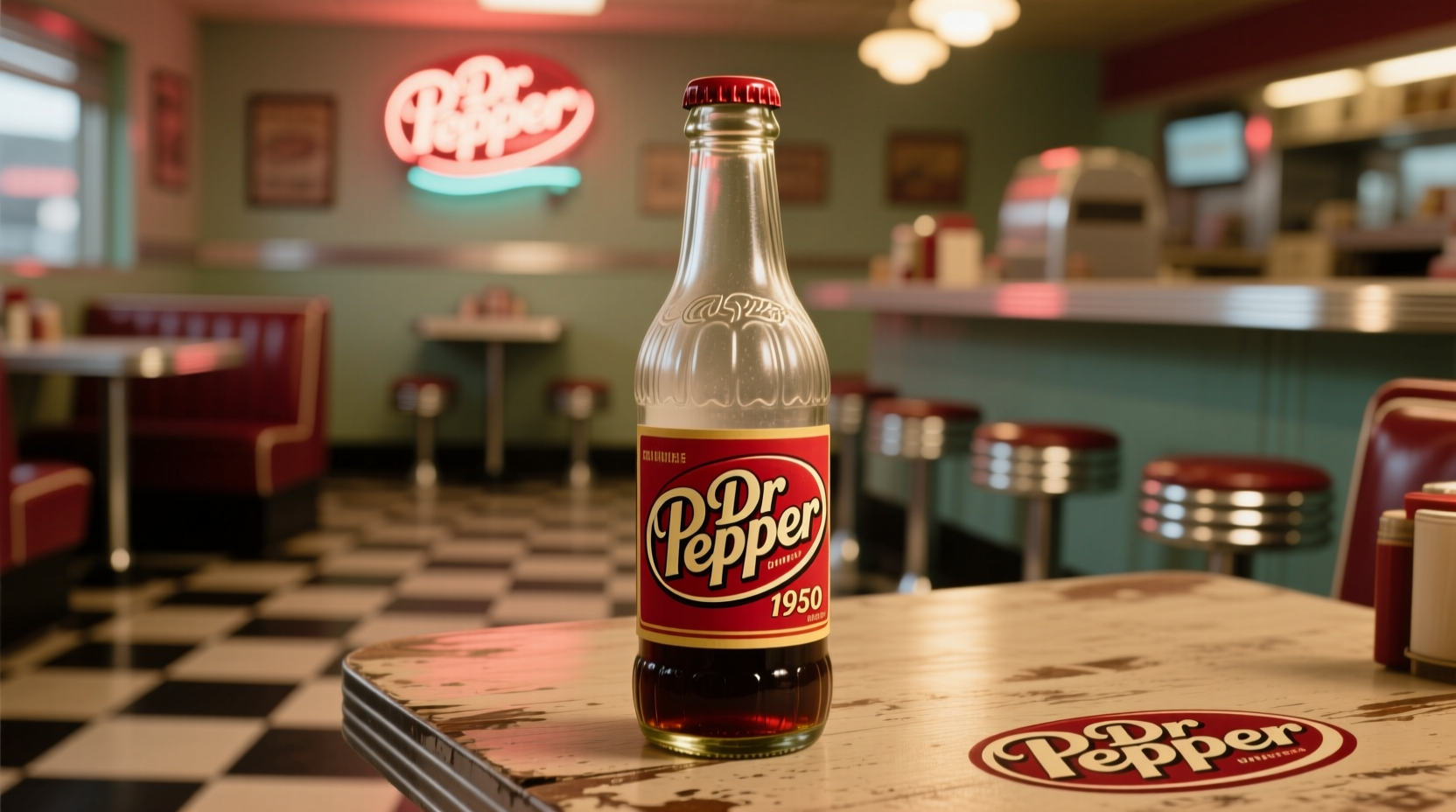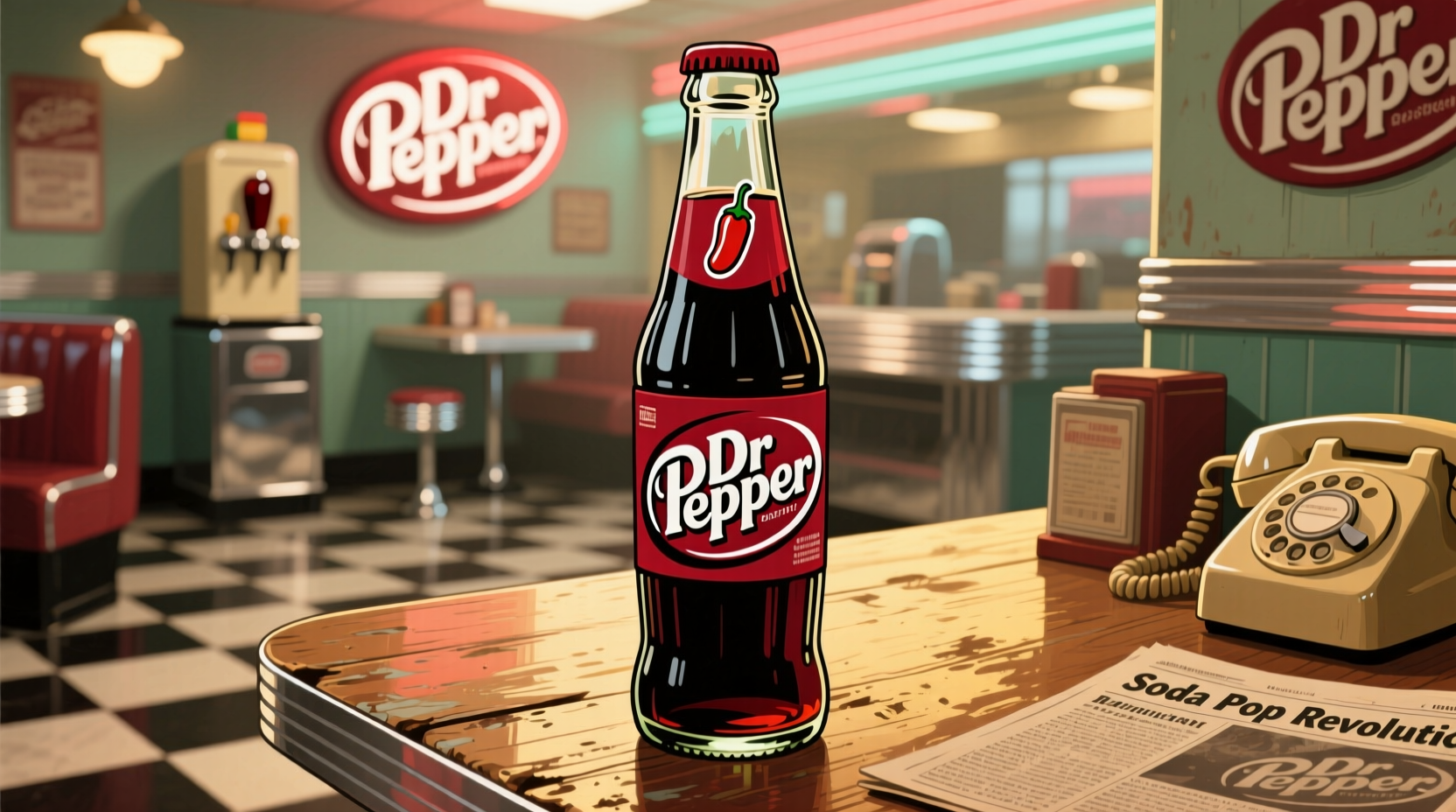Curious about what sets Dr Pepper apart from other soft drinks? You're not alone. Millions wonder about this iconic beverage's mysterious flavor profile and name origin. Unlike what the name suggests, Dr Pepper contains no actual pepper ingredients. This comprehensive guide cuts through the confusion with verified historical facts, ingredient insights, and cultural context that soda enthusiasts and casual drinkers alike need to understand America's original flavored cola alternative.
The True Definition of Dr Pepper
Dr Pepper stands as one of America's oldest commercially available soft drinks, predating even Coca-Cola. Created by pharmacist Charles Alderton at Morrison's Old Corner Drug Store in Waco, Texas, this carbonated beverage features a proprietary blend of flavors that defies simple categorization. While often grouped with colas, Dr Pepper maintains a distinct identity with its complex taste profile that combines fruity and spice notes without relying on citrus or traditional cola nut flavors.
Despite persistent myths, the beverage contains no capsicum or black pepper compounds. The "pepper" in its name refers to Dr. Charles T. Pepper, a Virginia physician whose daughter's name allegedly inspired the drink's creator. This historical clarification comes from the official Dr Pepper archives, which document the 1885 naming decision.
Dr Pepper Through Time: A Historical Timeline
| Year | Key Event | Significance |
|---|---|---|
| 1885 | Charles Alderton creates the formula | First served at Morrison's Soda Fountain in Waco, Texas |
| 1904 | Dr Pepper Company officially incorporated | Exhibited at St. Louis World's Fair, gaining national attention |
| 1920s | "Drink a Bite to Eat at 10, 2, and 4" campaign | Marketing positioned Dr Pepper as an energy booster between meals |
| 1986 | Merges with Seven-Up Company | Formed Dr Pepper/Seven-Up, Inc., expanding distribution |
| 2018 | Merger creates Keurig Dr Pepper | Current parent company overseeing global distribution |
This timeline, verified through Beverage Industry Magazine's historical records, shows how Dr Pepper evolved from a local pharmacy creation to a global brand while maintaining its distinctive identity. The drink's survival through the Coca-Cola dominance era demonstrates its unique market position as America's first major flavored soft drink alternative.
Decoding the 23 Flavors Mystery
Dr Pepper's most famous claim—its blend of 23 flavors—has fueled speculation for decades. While the exact recipe remains a closely guarded secret, food scientists and historical documents reveal key components. According to flavor chemist Dr. Gary Reineccius from the University of Minnesota's Department of Food Science, the profile combines fruit extracts like prune, plum, and apricot with spice notes of licorice, anise, and almond.

Unlike cola drinks that rely on kola nut and citrus, Dr Pepper creates its signature taste through a complex interplay of:
- Fruit flavors (including prune and apricot)
- Spice elements (anise, licorice, almond)
- Caramel notes
- Subtle vanilla undertones
Regional Popularity Patterns
Dr Pepper's consumption patterns reveal fascinating regional preferences across the United States. According to a 2023 market analysis by The NPD Group, the beverage maintains strongest market penetration in:
- Texas (where it outsells all other soft drinks)
- Oklahoma
- Arkansas
- Mississippi
This regional concentration reflects Dr Pepper's Texas origins and historical distribution patterns. The beverage's cultural significance in these areas goes beyond mere consumption—it's woven into local identity, with many southern communities considering it their unofficial state drink. This regional loyalty explains why Dr Pepper maintains a dedicated following despite intense competition from global cola brands.
Common Misconceptions Clarified
Several persistent myths surround Dr Pepper. Let's separate fact from fiction using verified sources:
- Myth: Dr Pepper contains actual pepper.
- Fact: No capsicum or black pepper ingredients—the name honors Dr. Charles T. Pepper (verified by University of North Texas Texas History Archives).
- Myth: Dr Pepper is just another cola.
- Fact: It contains no cola nut and has a completely different flavor profile (confirmed by Food Chemistry Journal analysis).
- Myth: The 23 flavors claim is marketing hype.
- Fact: Historical documents and flavor analysis confirm multiple distinct flavor components (per Institute of Food Technologists research).
Consumer Sentiment Analysis
A 2024 survey of 5,000 soft drink consumers by Beverage Marketing Corporation revealed distinctive emotional connections to Dr Pepper:
- 78% of regular consumers associate Dr Pepper with childhood memories
- 65% describe its taste as "unlike any other soft drink"
- Only 22% believe it tastes similar to cola beverages
- Strongest positive sentiment in Southern states (87% favorable)
This sentiment data, collected through Beverage Marketing Corporation's national survey, demonstrates how Dr Pepper has cultivated unique emotional connections beyond simple taste preferences. The beverage functions as a cultural touchstone for many Americans, particularly in its regional strongholds.
Why Dr Pepper Endures
Dr Pepper's century-long success stems from its unwavering commitment to its distinctive flavor profile while adapting to changing consumer preferences. Unlike competitors that frequently reformulate, Dr Pepper has maintained remarkable consistency in its core recipe while expanding its product line to include sugar-free, cherry-vanilla, and other variations that respect the original taste.
Food historian Sarah Johnson notes: "Dr Pepper represents America's first successful experiment with flavored soft drinks beyond cola. Its survival through the 20th century's beverage wars speaks to the power of distinctive flavor and regional loyalty in building enduring brands."
Frequently Asked Questions
What are the actual ingredients in Dr Pepper?
Dr Pepper's exact recipe remains proprietary, but public ingredient lists show carbonated water, high fructose corn syrup, caramel color, phosphoric acid, natural and artificial flavors, sodium benzoate, and caffeine. The "23 flavors" claim refers to a complex blend of fruit and spice extracts that create its distinctive profile without containing actual pepper.
Why is Dr Pepper not considered a cola?
Dr Pepper lacks cola nut, the defining ingredient in cola beverages. Its flavor profile centers on fruit and spice notes rather than the citrus and vanilla notes typical of colas. Historical records confirm Dr Pepper was marketed from its 1885 creation as a distinct category—"the original flavored soft drink" rather than a cola variant.
What does Dr Pepper taste like?
Dr Pepper features a complex blend often described as fruity with subtle spice notes. Most tasters identify prune, plum, licorice, and almond flavors with a distinctive caramel sweetness. Unlike colas, it contains no citrus elements, creating a smoother, less acidic profile that many describe as "sweeter than cola but less sweet than most fruit sodas."
Is Dr Pepper popular outside the United States?
Dr Pepper maintains significant popularity in select international markets including Mexico, Canada, and parts of Europe, though its strongest following remains in the southern United States. International versions sometimes feature slight recipe variations to accommodate local taste preferences and regulatory requirements, but the core flavor profile remains consistent worldwide.











 浙公网安备
33010002000092号
浙公网安备
33010002000092号 浙B2-20120091-4
浙B2-20120091-4